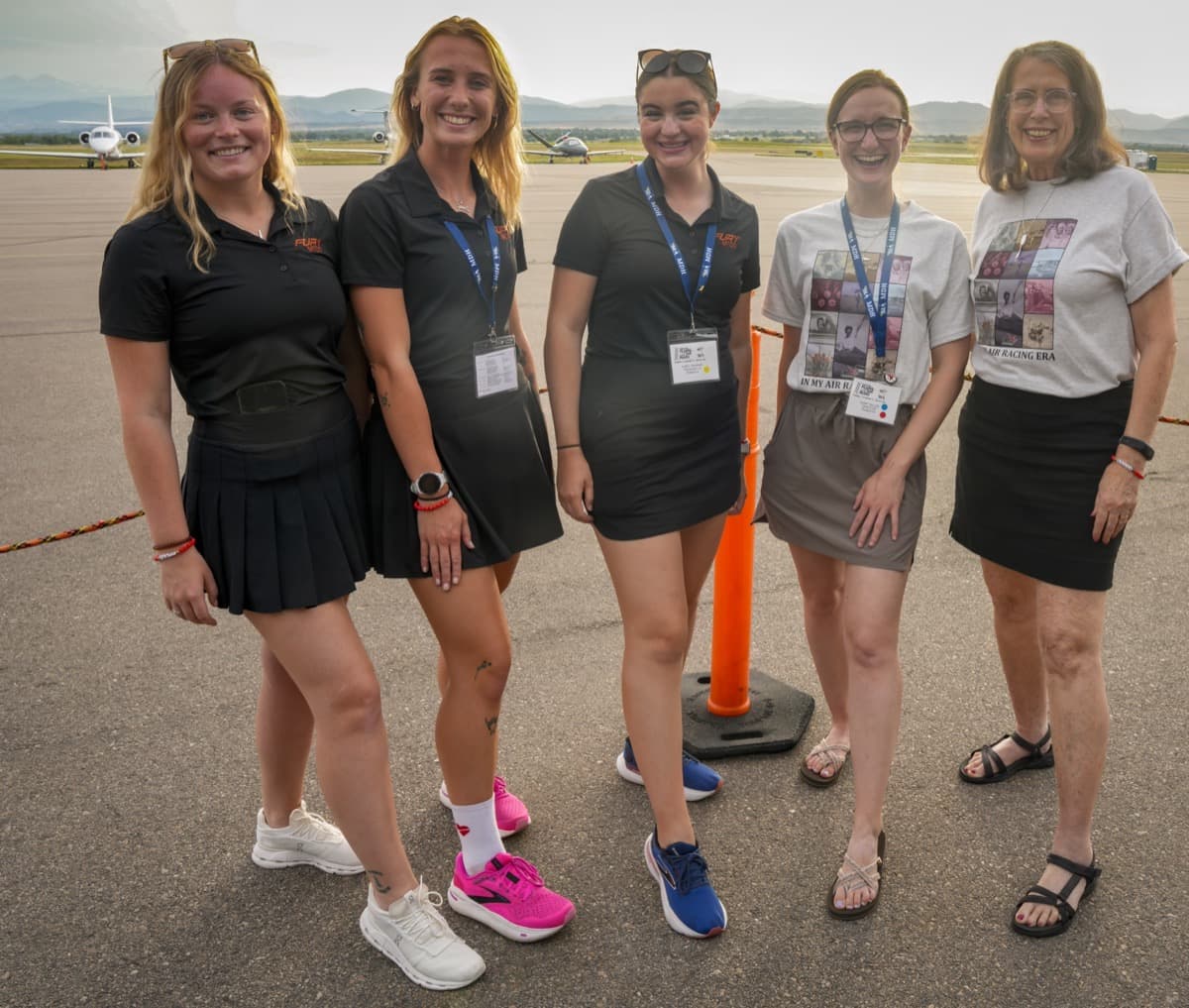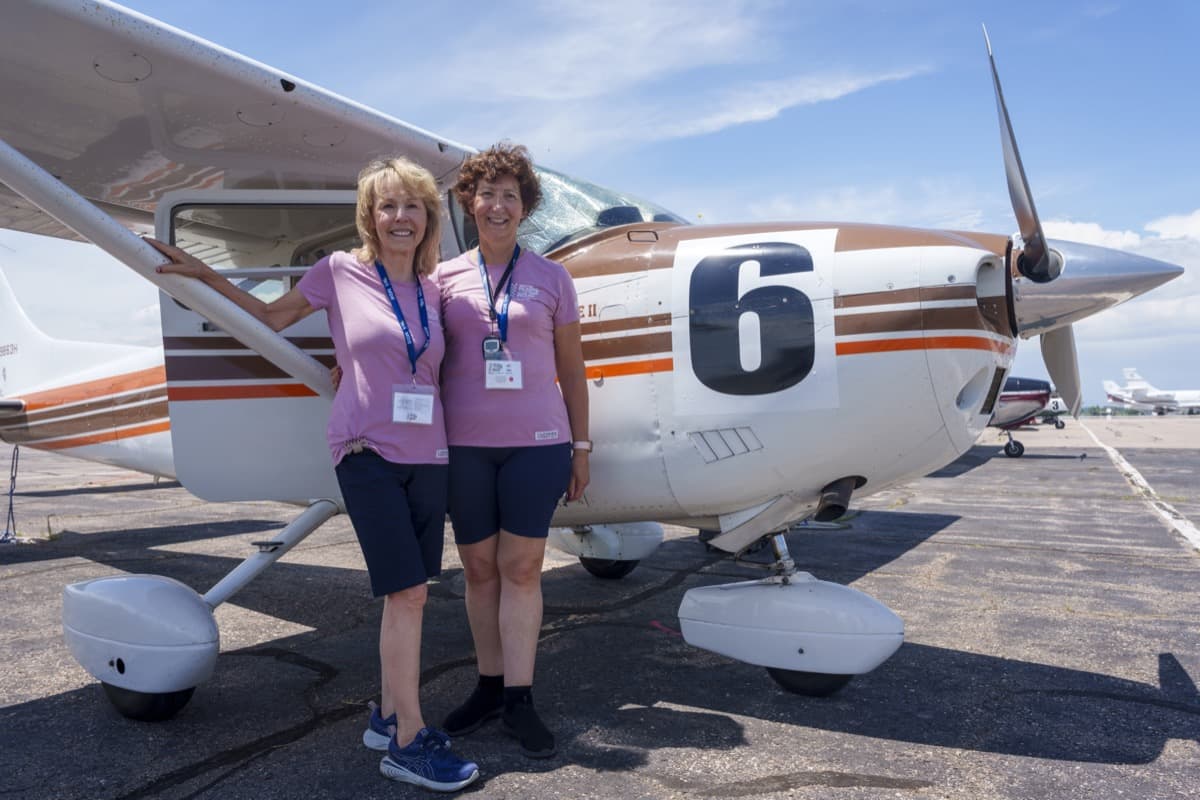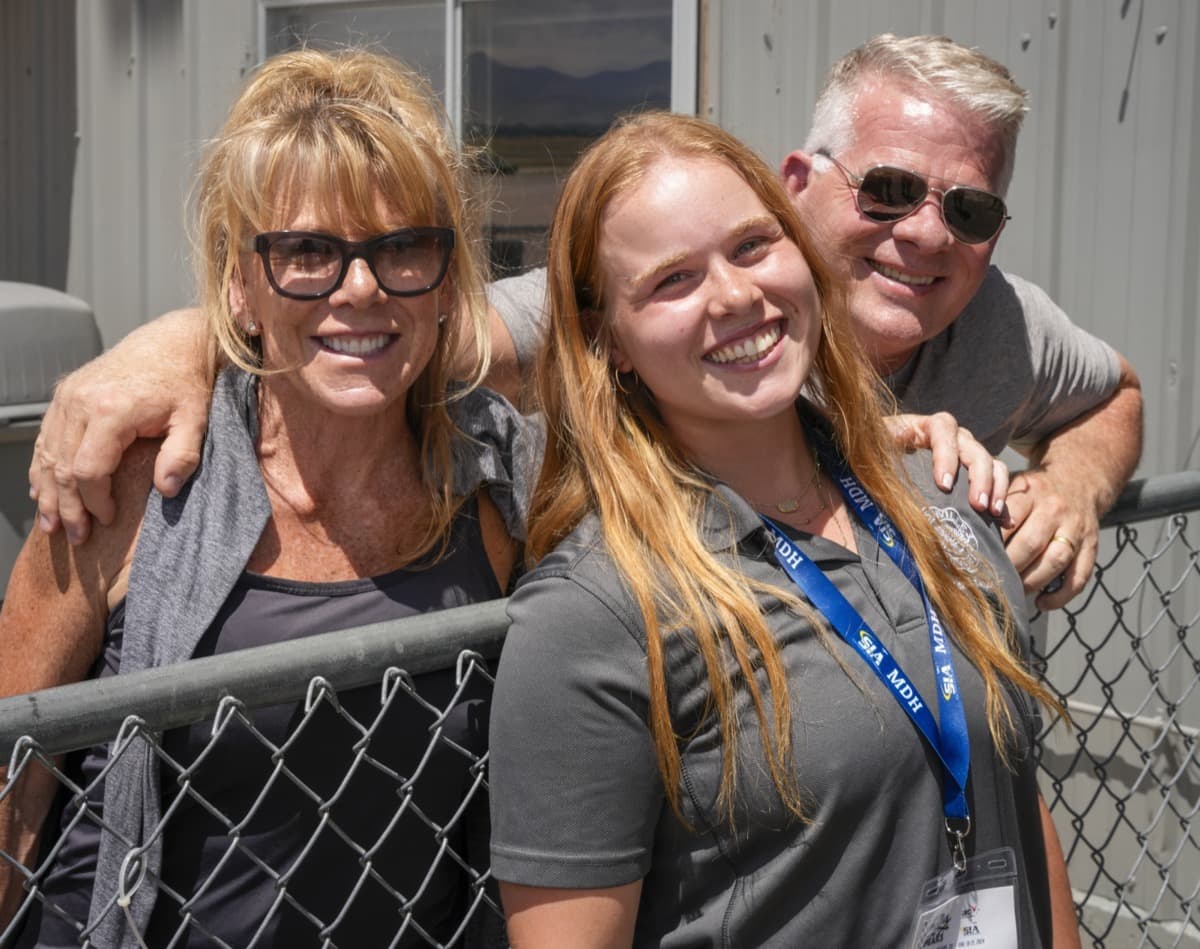
When’s the last time you went for a really long flight? With a bunch of friends? Racing the entire way?
For the 91 women on 47 teams who just finished the 2024 Air Race Classic (ARC), it was June 18-21. The race was fun and safe, but still filled with adventure, weather, and camaraderie.
ARC is a woman-only, VFR, daylight race. Women’s air racing has been around since 1929, and this incarnation re-started in 1977.

This year’s event tallied an impressive 2,610 miles with 10 airports across nine states. Racers had about 53 racing hours to complete the course, since all contestants must be on the ground at a designated stop before sunset.
Their stated goal is “to fly the perfect cross-country” flight faster than their handicapped speed, so routing, altitude, and weather are critical to get right.

This year’s race started in Carbondale, Illinois, at Southern Illinois Airport (KMDH) and included legs as far north as Cadillac, Michigan (KCAD), as far east as Newark, Ohio (KVTA), and as far south as Bartlesville, Oklahoma (KBVO), before finishing at Northern Colorado Regional Airport (KFNL) in Fort Collins, Colorado.
ARC president Donna Harris was thrilled with the results, saying this year’s “From the Plains to the Peaks” race was a great success.

“We didn’t have to cancel any legs for weather and everyone made it safely,” she said, adding this was the biggest field of competitors since 2018.
This year’s winners were Debi Dreyfuss and Joy Halcott in their 2005 Cessna Skylane 182T. Their total elapsed flying time was 15:05, at 6.218 mph over their handicap speed and zero penalties.

About half the field were collegiate entries and the first-place collegiate team was Alyssa Sheehan and Peyton Turner of the “Flying Flashes-Navy” at Kent State University. The women finished in 18:03 in their 2020 Cessna Skyhawk 172S with 0.111 over their handicap speed.
This year’s oldest racer was, once again, Marie Carastro from Montgomery, Alabama, at, what she proclaims, “95-1/4 years old.”
She started her racing career in 1960 with the Powder Puff Derby and this is her 21st ARC.
“I don’t even know how many hours I have,” she joked.
That’s okay — her daughter, Susan, an ATP with 3,400 hours, flew with her and finished her own 20th ARC.
Granddaughter/niece Danielle joined — she has 300 hours of her own, as well as being a licensed dispatcher. Danielle was using the race as practice for her upcoming commercial check ride. Her father, Michael, Susan’s brother and Marie’s son, is a pilot and usually provides ground support. They finished in 11th place, just 1.671 mph slower than their handicap. It’s a family event, for certain.
Susan said the race relies on cooperation.
“It’s crew resource management,” she explained. “We each have responsibilities and double check each other. Marie gives inspirational credit to her late husband — they met when she was flying for Civil Air Patrol and he was teaching in Lockheed T-33s in the USAF.”

Despite their youth, many of the collegiate team members are also multi-year racers, like Tracy Mitchell with University of North Dakota Team #3, who is a CFII with some 300 hours.
“It was a blast last year,” she said.
Her family drove from their Montana home to the Colorado finish site to congratulate her and all were visibly beaming at the finish line.
“We’re so proud!” said her mother, Hope Mitchell, while father Kevin said, “We never imagined this much success and involvement.”
The only pilot in her family, Tracy led UND’s “Frozen Force” crew of Caroline Kelley and Helena Lind to a 10th place collegiate finish with an ET of 20:52 in their 2015 Cessna Skyhawk.
Lest spectators think the race planes were only Cessnas, other competitors included a Comanche 250, Diamond DA40s, several Mooney M20s, a Beechcraft Bonanza A36, two Cirruses, and multiple Pipers.

One special Piper was raced by Piper employees representing sales, marketing, and engineering: Aircrew Carly Shuklar and Lucy Freeman were both first-time entrants. The “company car” for The Piper Powderpuffs was a 2024 Piper Archer PA-28-181 painted like its bigger sibling, Piper’s new M700 Fury.

The race attracts international competitors, too. After participating multiple times and winning in 2017, Dee Bond came back from New Zealand to race this year with Jan McKenzie, finishing seventh in their 1982 Cessna Skylane 182R at 15:54 and 1.389 mph over handicap.


Despite the intensity of the racing, the event brought the teams together. Team #9, SkyMoms, said their favorite part of their first race was the camaraderie.
“We were just having fun,” said Timber Dawson, who got her commercial certificate two weeks before the race launched. “When the weather socked us in, we all sat around talking and playing cards. It’s fun being in this group of women and how we support each other.”
Her teammate, Sarah Haskett, added, “Sure, we were tired and hot. We worked it out. We’re all leaving as friends, so it all evens out.”
Both racers hit 400 hours during the event, and hope to race again in their 1965 Cessna C172G. They finished 22nd at 23:29 and 19.815 mph below their handicap.
Team Air Hearts, #25, featured Joelene Smith in her debut race and Amanda Callahan in her second ARC. Smith has 1,000-plus hours, her instrument rating, and is eager to race again.

“I love flying and it’s great to have competition,” she said. “It’s a totally different kind of flying.”
Amanda, with 443 hours and her commercial and instrument ratings, is working on her CFI and is also eager to race again. Their 1978 Beechcraft Bonanza A36 finished in 13:20, 1.973 mph slower than their handicap, good for 13th place.

The race is open to women pilots with a current private pilot certificate or greater, current medical, and at least 100 hours of PIC time. Entrants come from all over the world and the number of racers with five-digit hours recorded is quite impressive. Aircraft must be certified, single-engined, and normally aspirated. Race speeds are handicapped based on qualifying flights at the start and finish of each race leg, and then the team’s speed is calculated against those times and the team that beats their handicap by the most wins.
For more information: AirRaceClassic.org

Leave a Reply